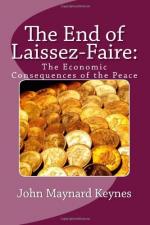|
This section contains 670 words (approx. 3 pages at 300 words per page) |

|
Laissez Faire in the Gilded Age
Summary: Did the government actually adhere to its proclaimed laissez faire doctrine?
After the conclusion of the American Civil War, the United States' economy began to grow at an exponential rate. This growth brought about a new degree of attention to the nation's economy, which resulted in the adaptation of numerous fiscal policies. One of these policies was the notorious "hands off" theory of economics known as laissez faire. Although the United States admitted to practicing this platform, it became obvious that this principle was debauched in regards to railroads, interstate commerce, and antitrust activities.
Amasa Walker, author of The Science of Wealth: A Manual of Political Economy, became a voice of numerous American businessmen when this statement was made: "Economically, it will ever remain true, that the government is best which governs least" (Document A). However, the United States government refused to listen to an outspoken minority, and began to practice a "hands on" approach to economics. This violation...
|
This section contains 670 words (approx. 3 pages at 300 words per page) |

|


